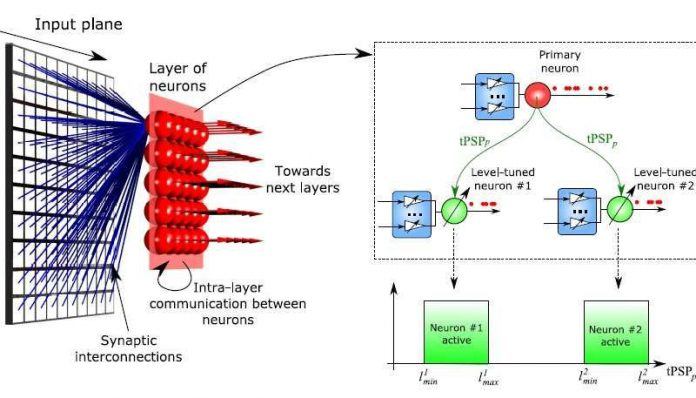Scientists have developed a neuromorphic i.e., computing system that acts the neural selectivity. They just used synthetic level-tuned neurons that conversely respond to particular types of stimuli. This level-tuned neurons allows neuromorphic computing systems to execute those tasks that conventional systems can’t. For example, analyzing from the environment, pattern recognition, and knowledge extraction from big data sources.
Normally, when you hear a sound, only some of the neurons in the auditory cortex of your brain are activated. This is because every auditory neuron is tuned to a certain range of sound. Thus each neuron is more sensitive to particular types and levels of sound than others.
This novel system depends on neurons and their synapses. Both are the junctions where neurons send signals to each other. By using phase change materials, scientists physically implements synthetic neurons. These materials have two constant states. 1. A crystalline, low-resistivity state and 2. An amorphous, high-resistivity state. As in conventional computing, the states can be switch by the application of a voltage. When the neuron’s conductance reaches a certain threshold, the neuron fires.
Evangelos Eleftheriou at IBM Research-Zurich said, “We have demonstrated the phase-change-based memristive devices. It can be used to create synthetic neurons and synapses to store and process data.”
The neuron uses the phase configuration of the phase-change material to represent its internal state, the membrane potential. For the phase-change synapse, the synaptic weight is responsible for the plasticity—is encoded by the conductance of the nanodevice.
In this neuromorphic computing system, each neuron tuned to a specific range or level. Neurons receive signals from many other neurons. The level is defined as the collective contribution of the sum of these incoming signals.
Eleftheriou said, “We have introduced the biologically inspired architecture of level-tuned neurons that is able to distinguish different patterns in an unsupervised way. This is important for the development of ultra-dense, scalable and energy-efficient neuromorphic computing.”
The important benefits of this level-tuned neurons are their improved learning ability. learning arise through repeated incoming signals in neuromorphic computing. This powers certain synaptic connections. The researchers showed level-tuned neurons are very good at learning multiple input patterns, even in the presence of input noise.
“A single neuron can be used to identify patterns and to discover correlations in real-time streams of event-based data. Level-tuned neurons maximize the potential of a single-neuron network for critical information when multiple patterns display at the input. Level-tuned neurons, along with the high-speed and low-energy characteristics of their phase-change-based implementation, will be particularly useful for various emerging applications, like Internet of Things. This will collect and analyze large volumes of sensory information and applications to detect patterns in data sources. For example, from social media to discover trends, or weather data for real-time forecasts, or healthcare data to detect patterns in diseases, etc.”
Scientists now planning to develop the concept of artificial level-tuned neurons to design improved large-scale neural networks.
Eleftheriou said, “We will be looking into more complex computational tasks based on artificial spiking neurons and their synapses. We are interested in studying the scaling potential and applications of such neuromorphic systems in cognitive computing systems.”
